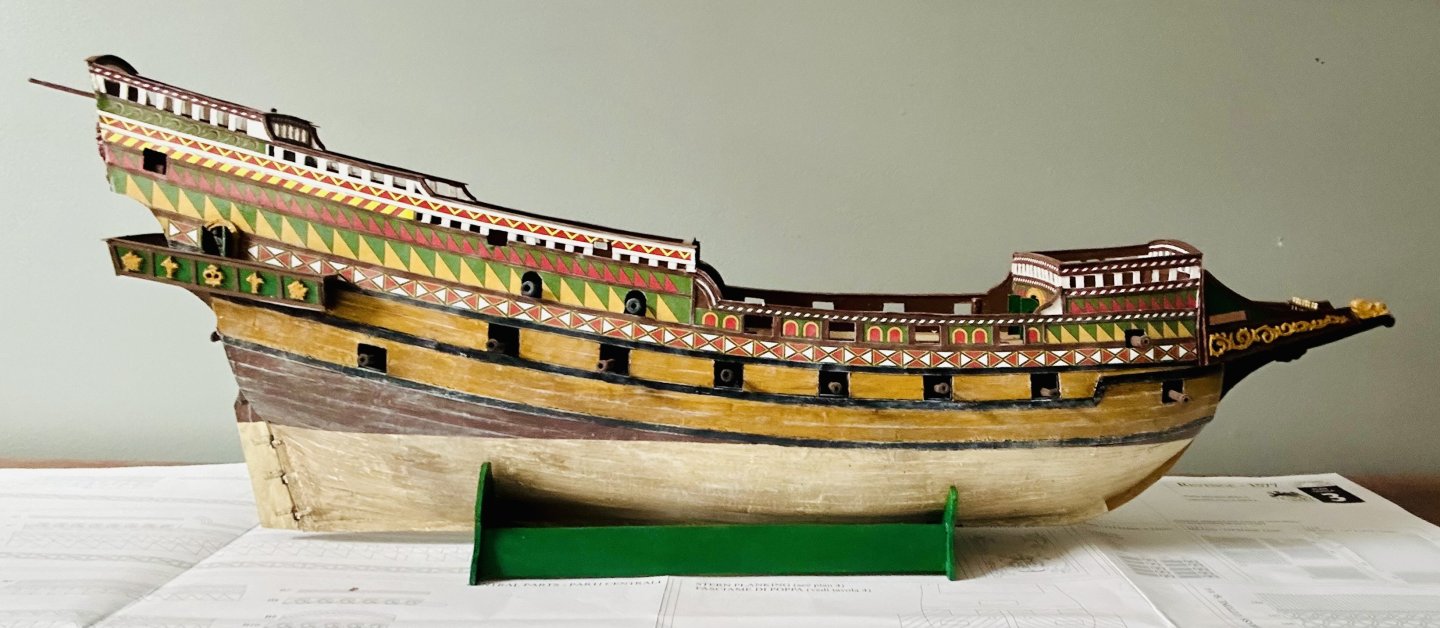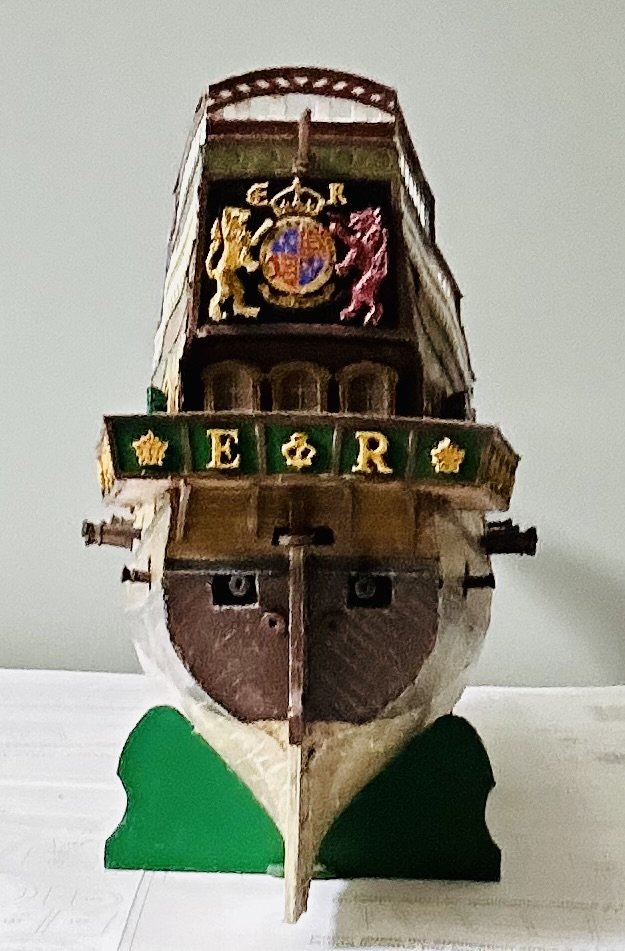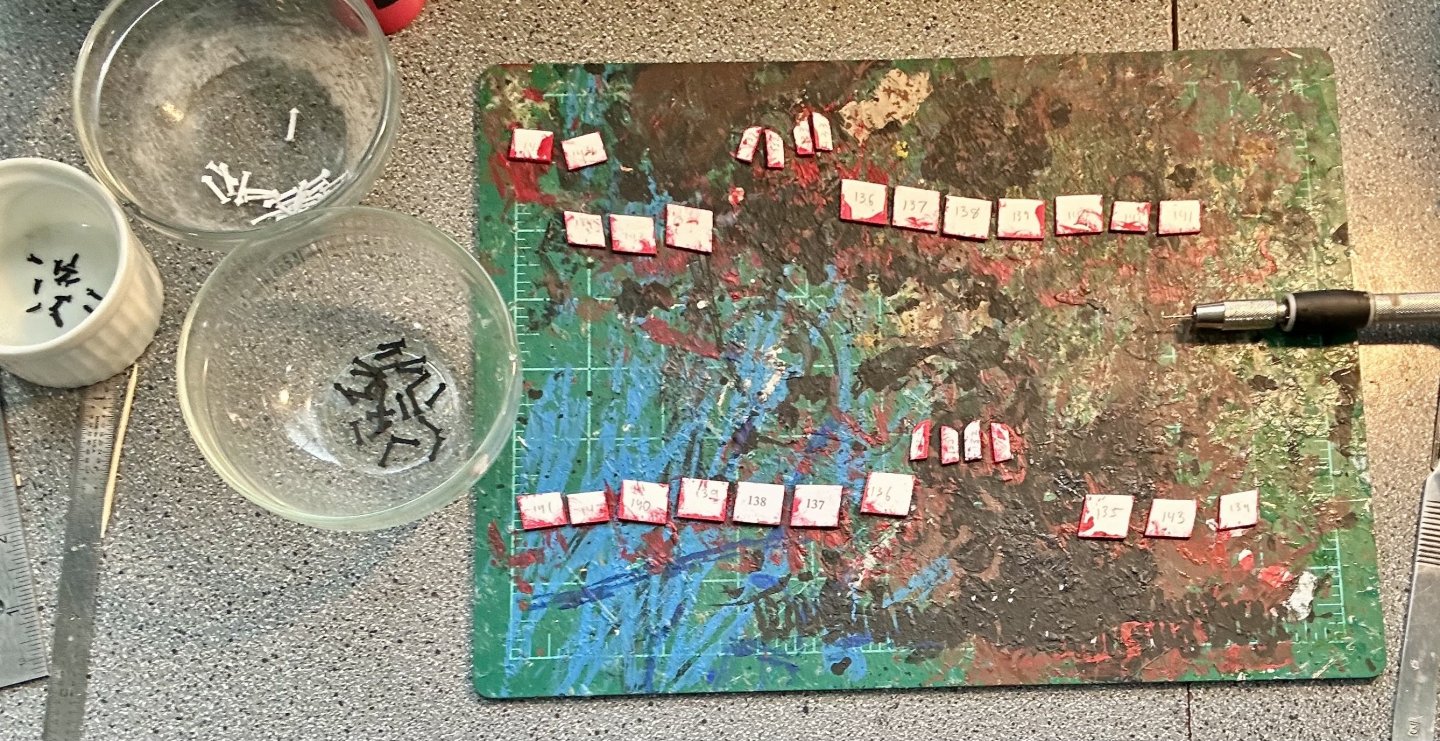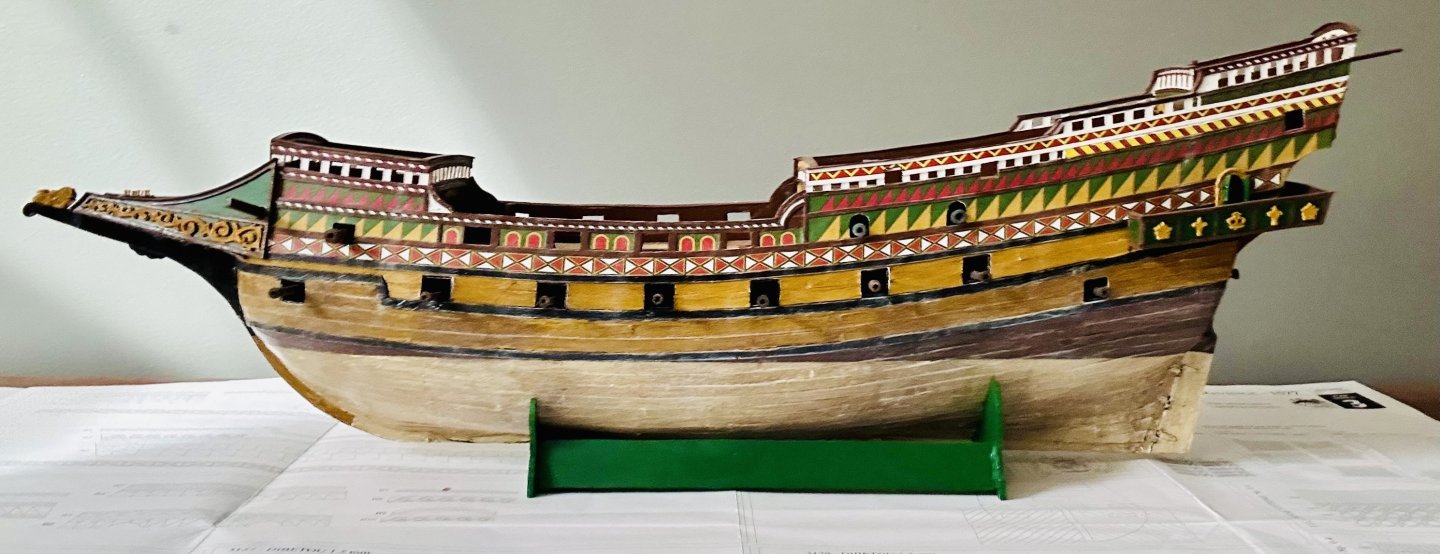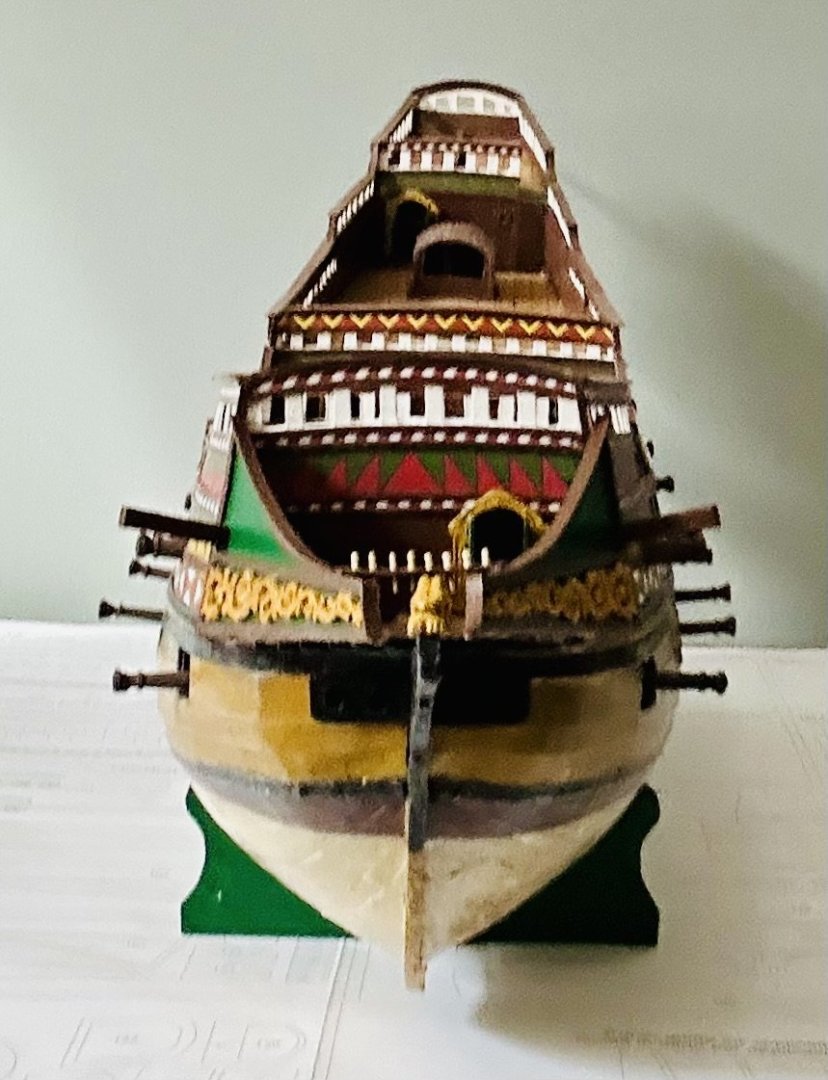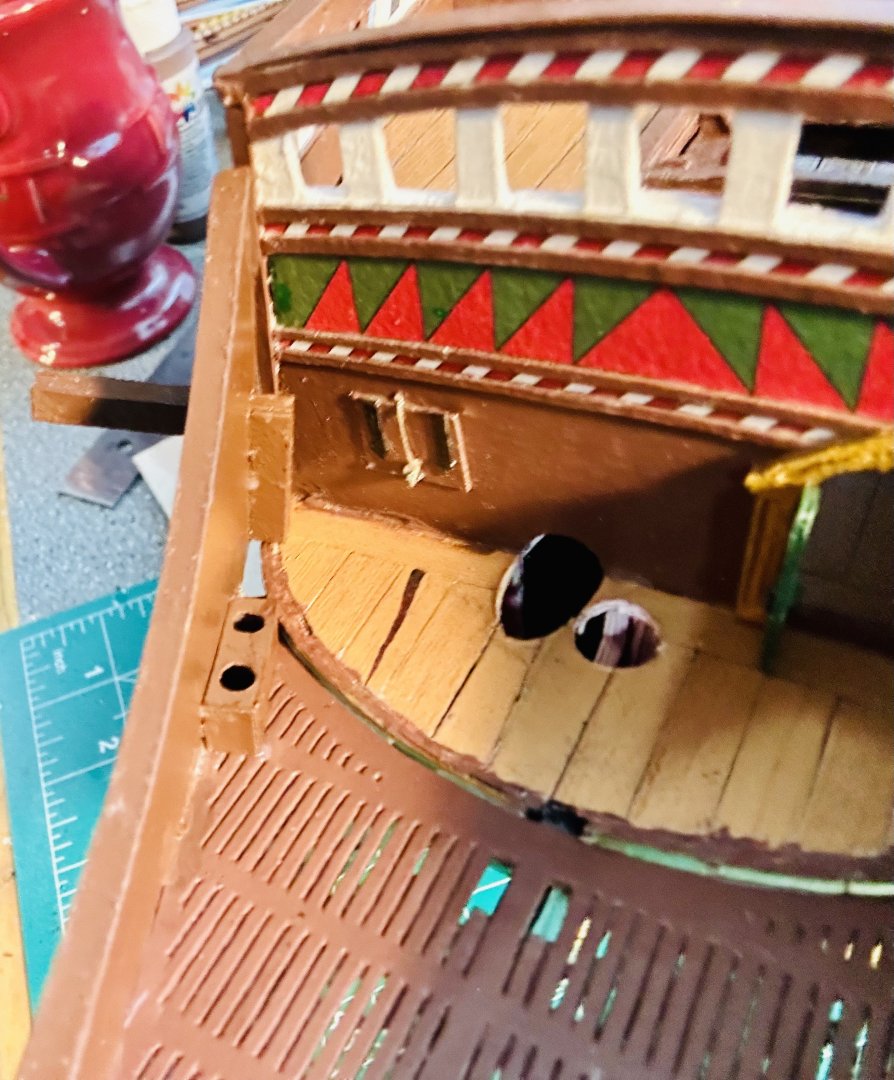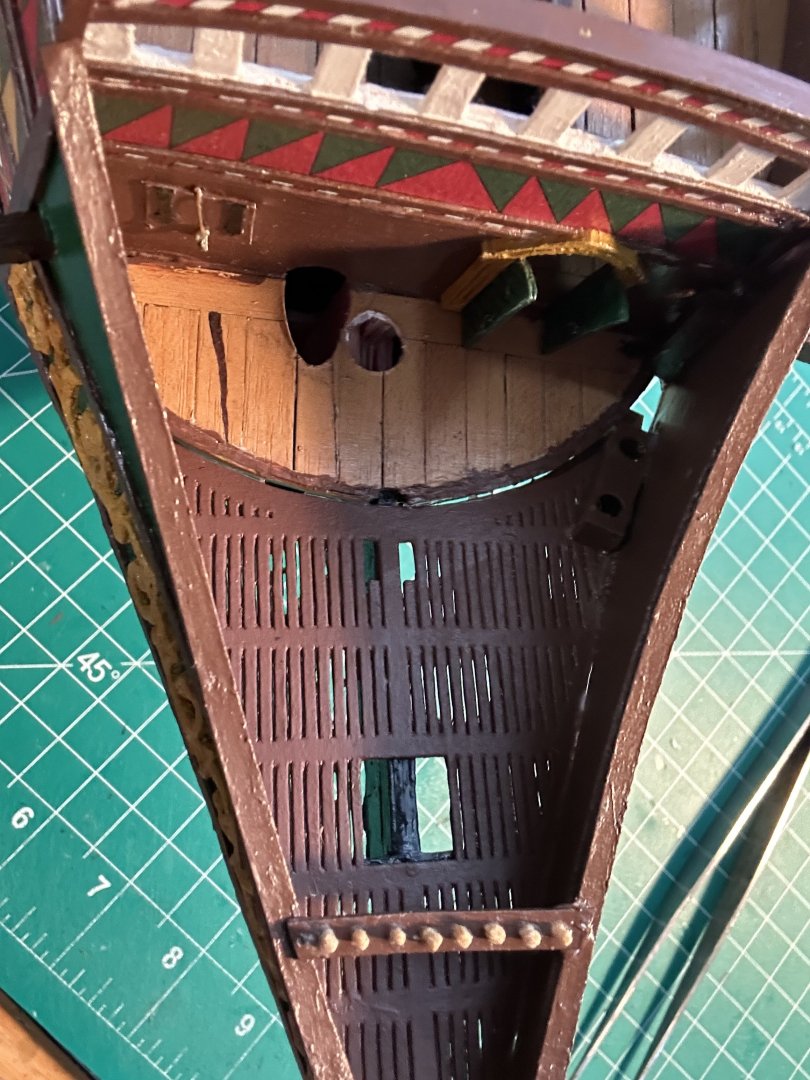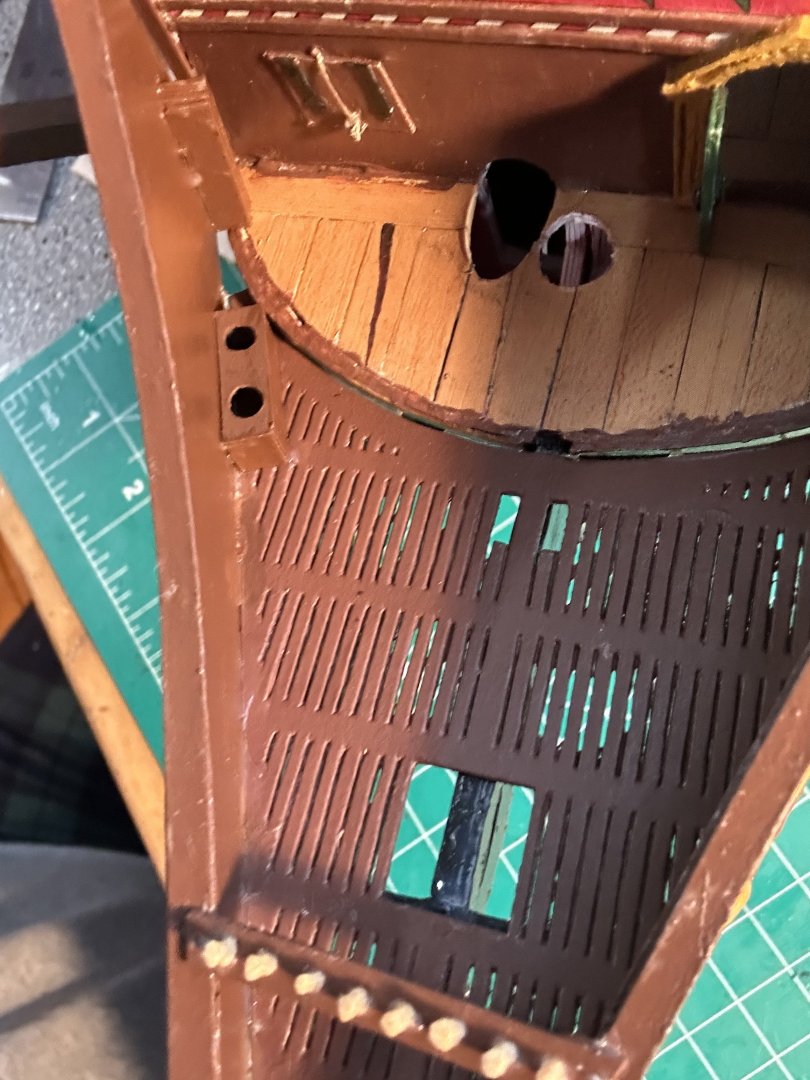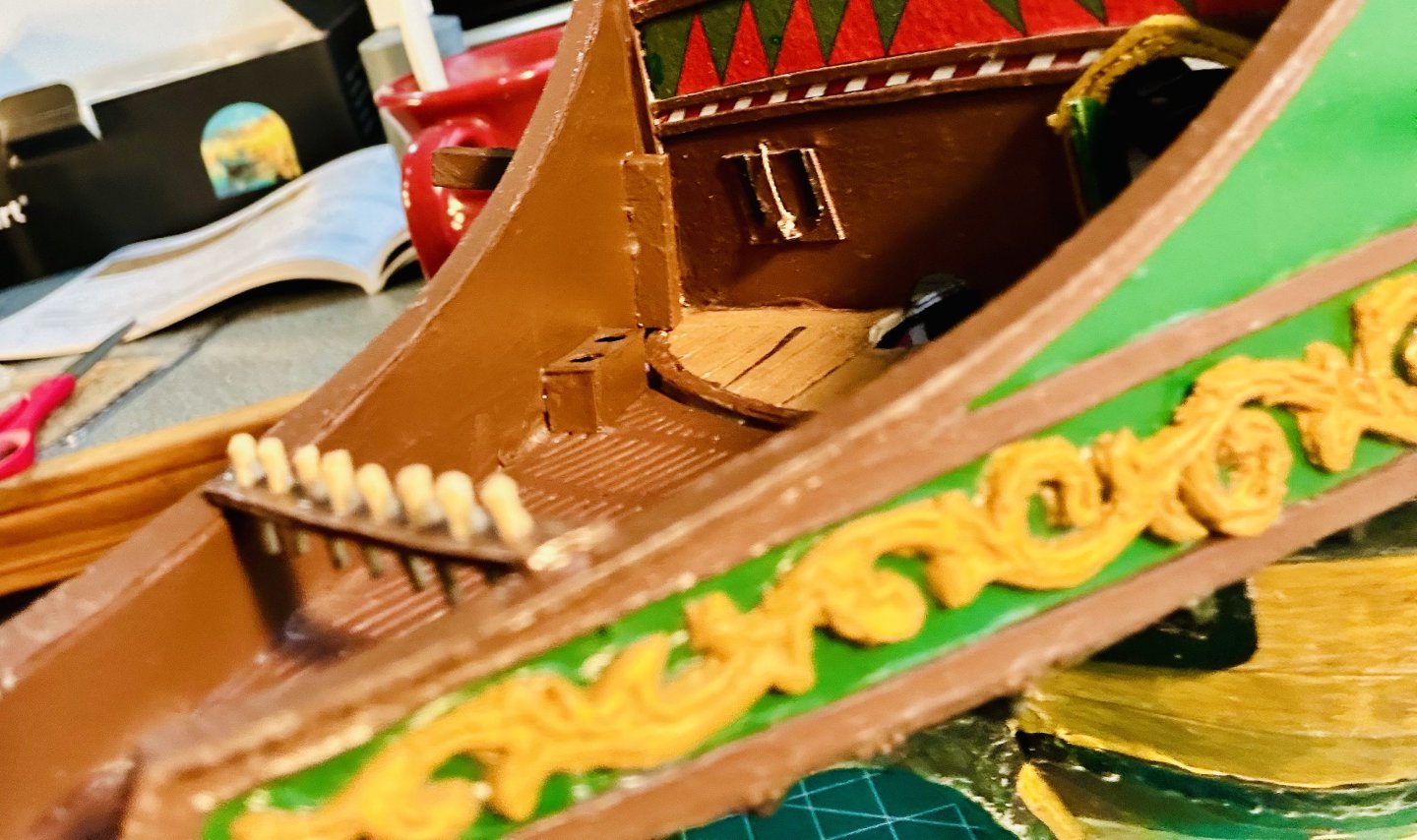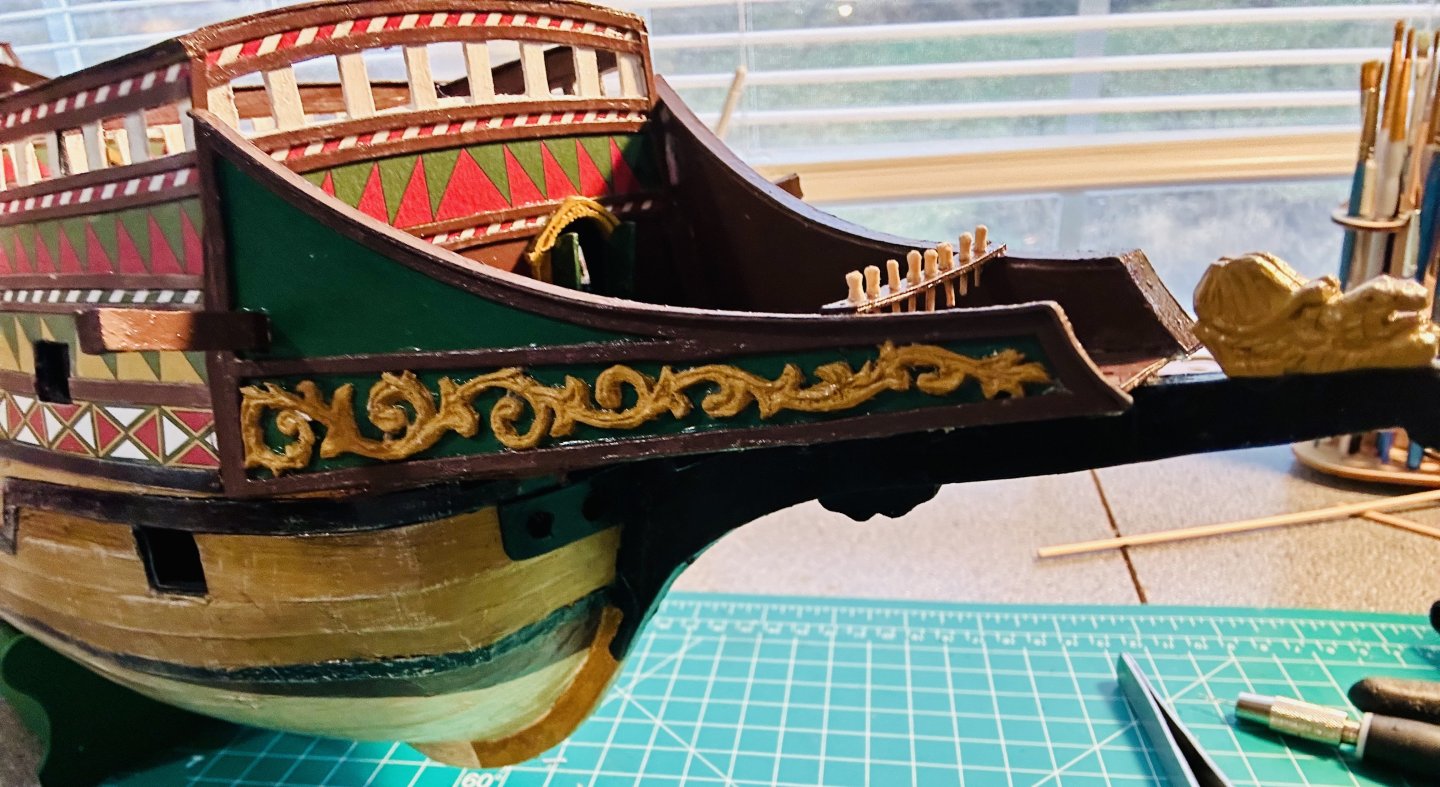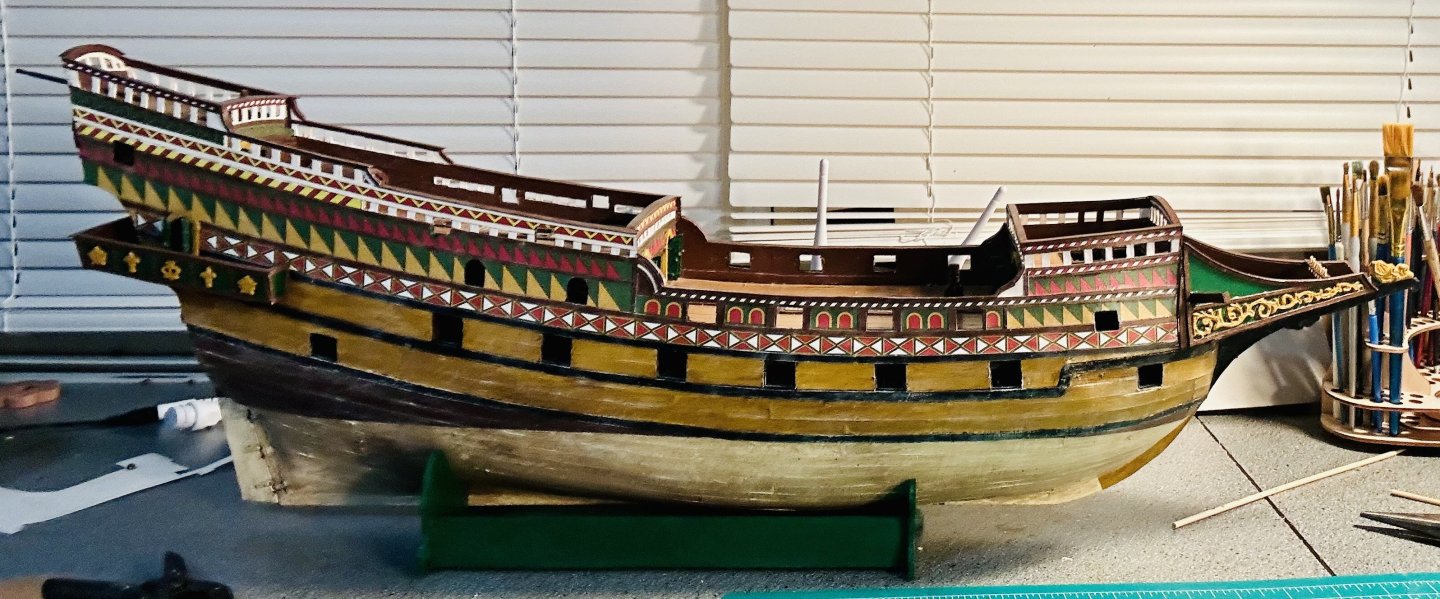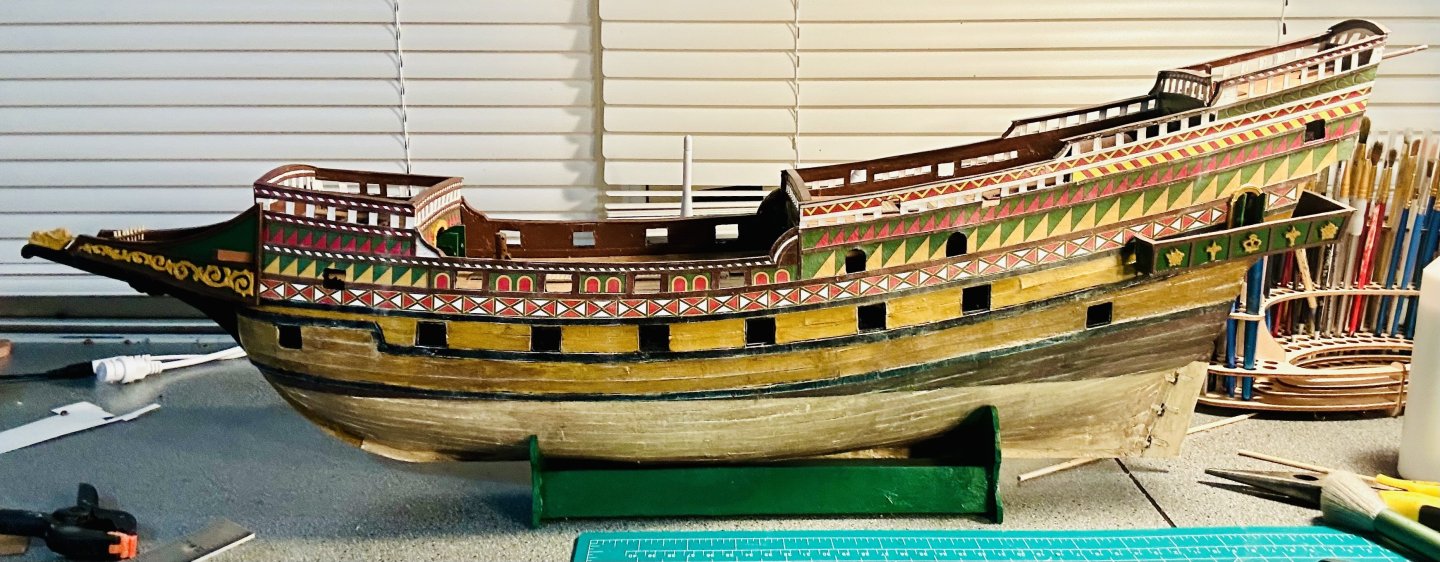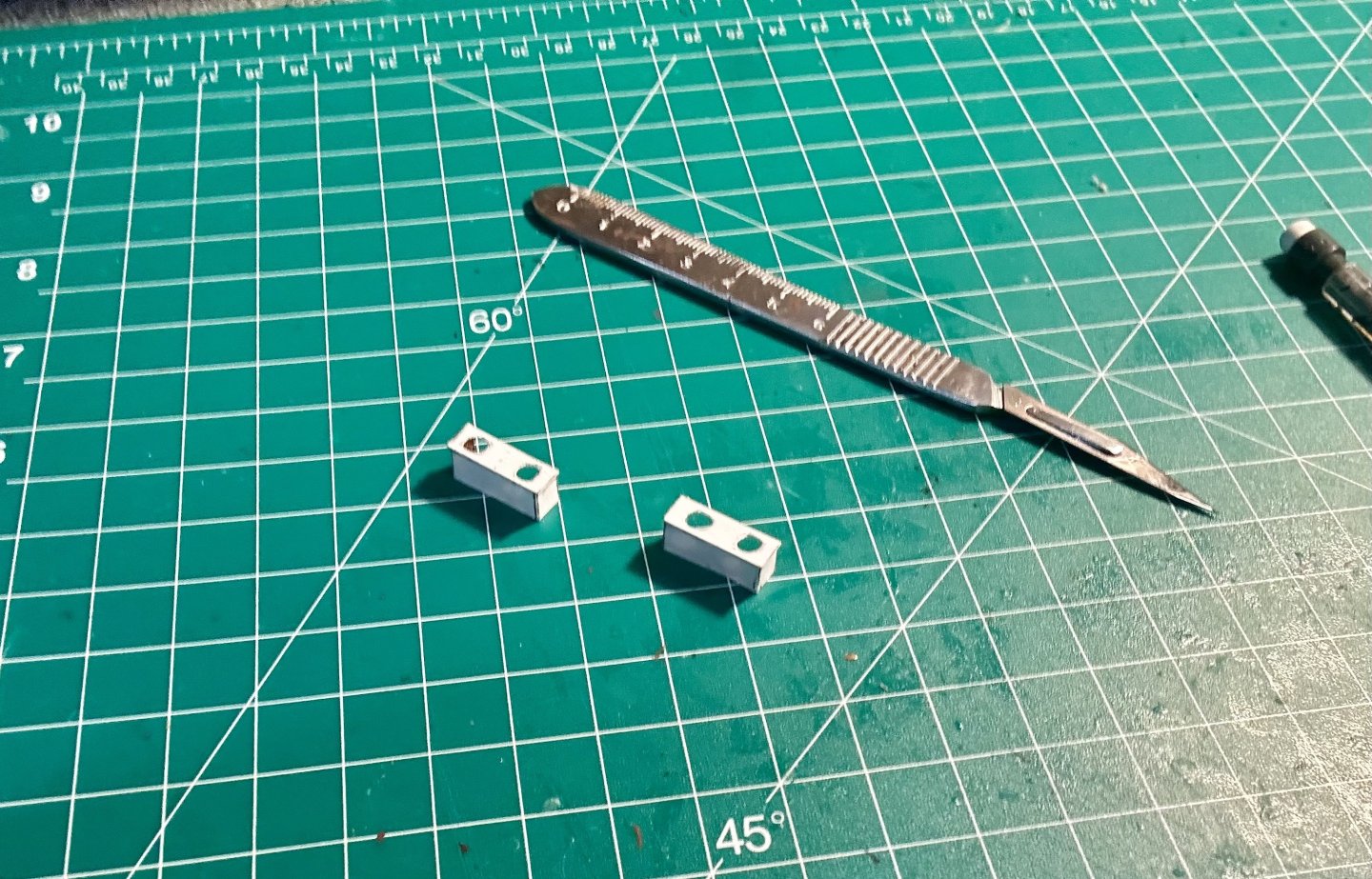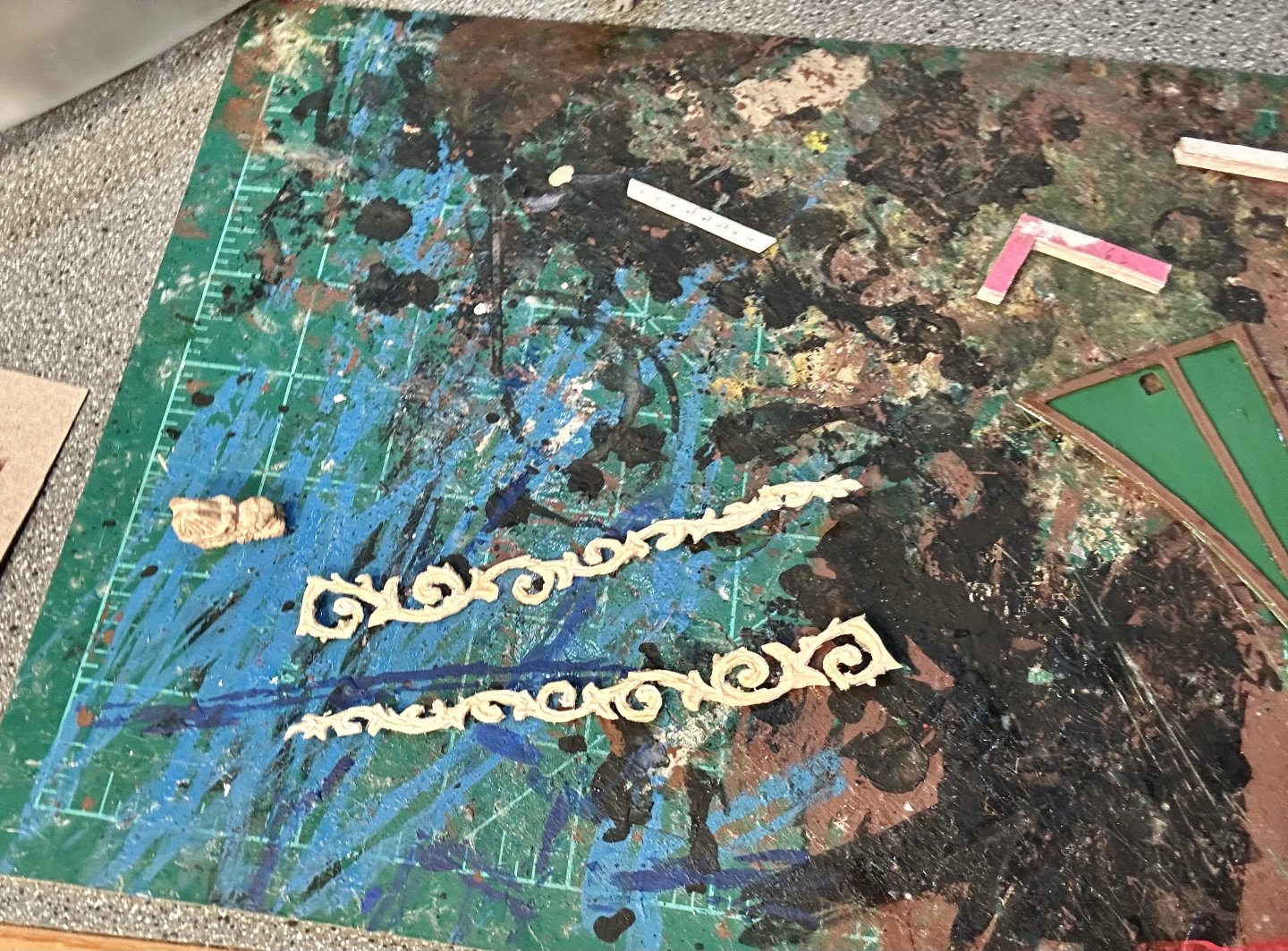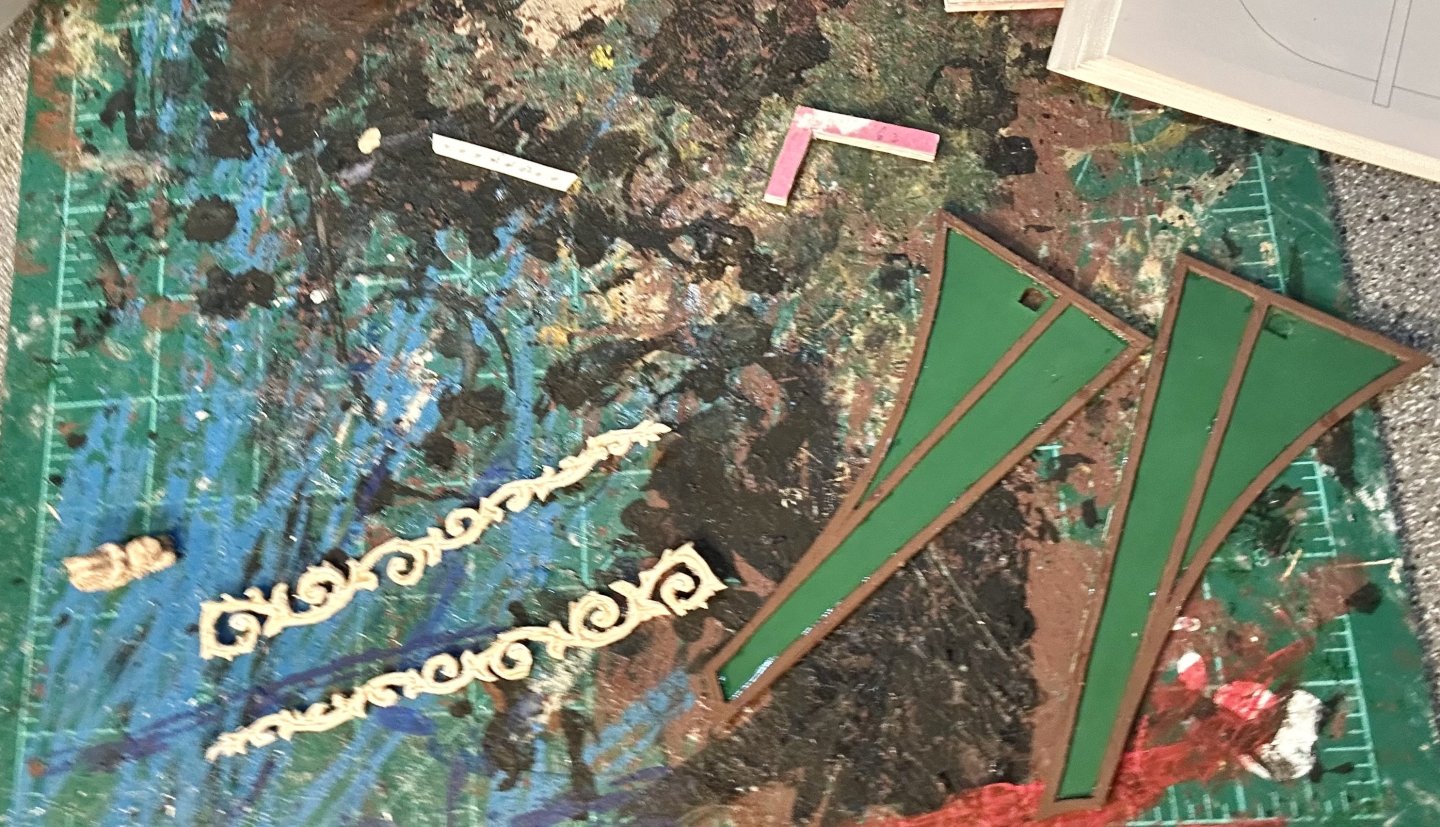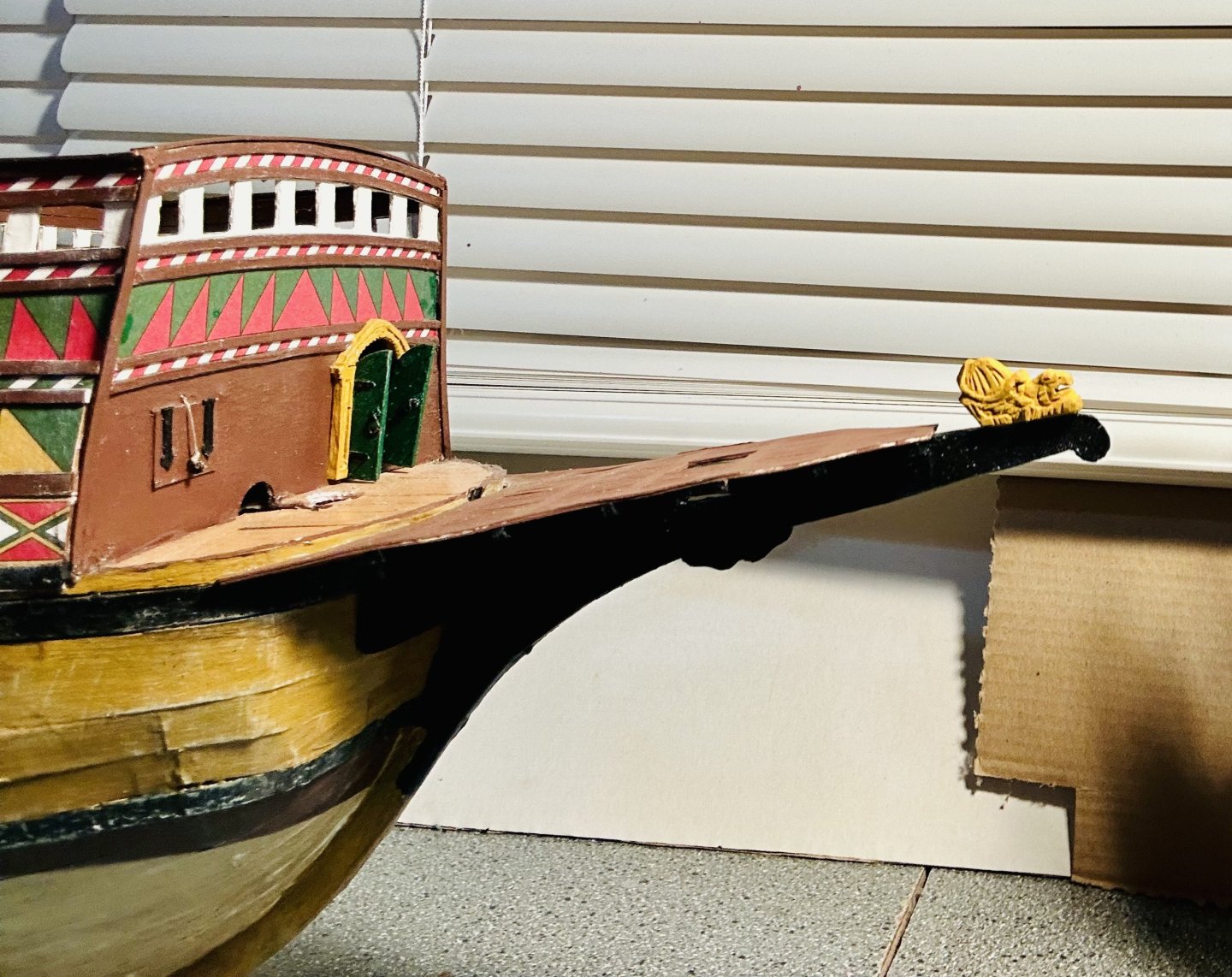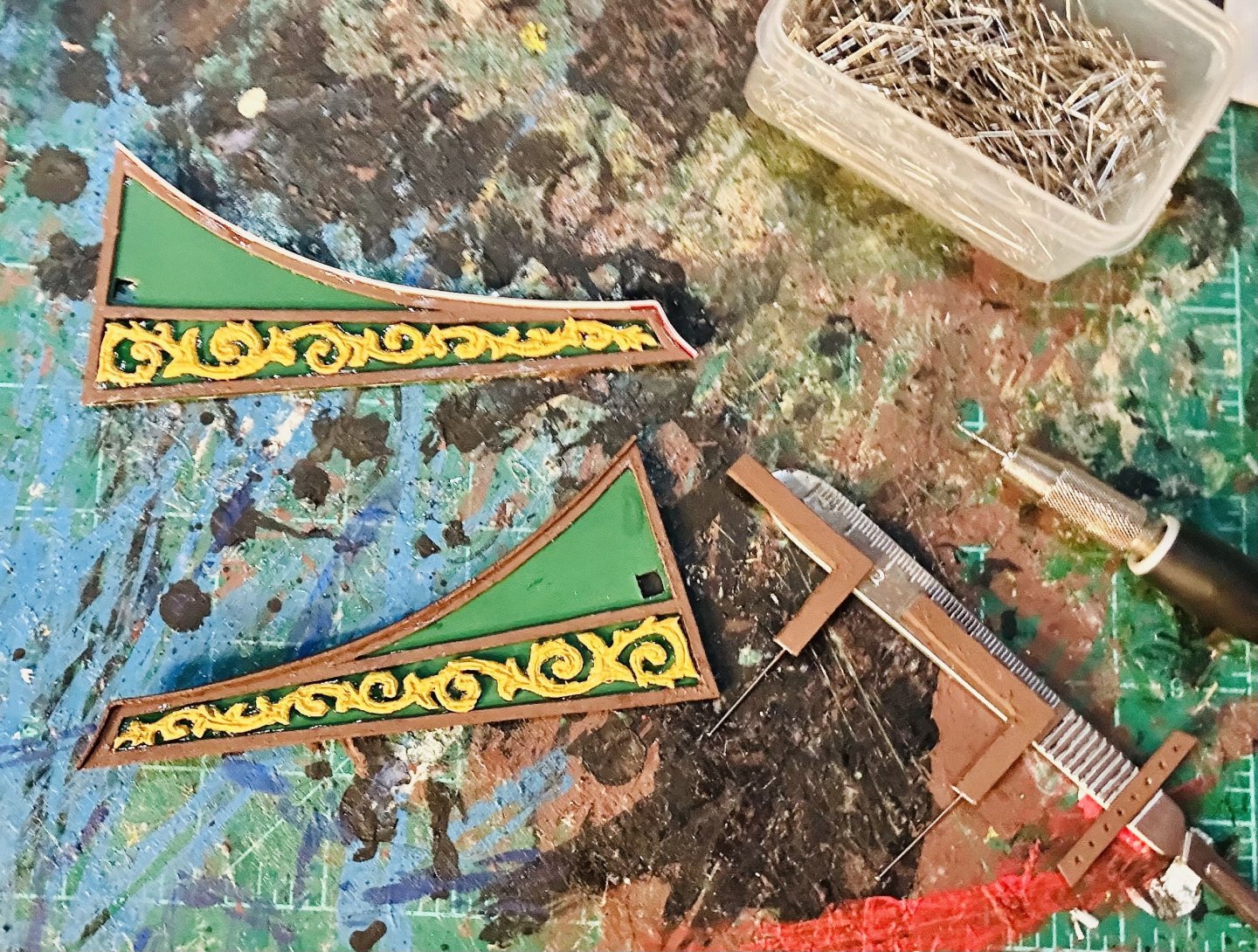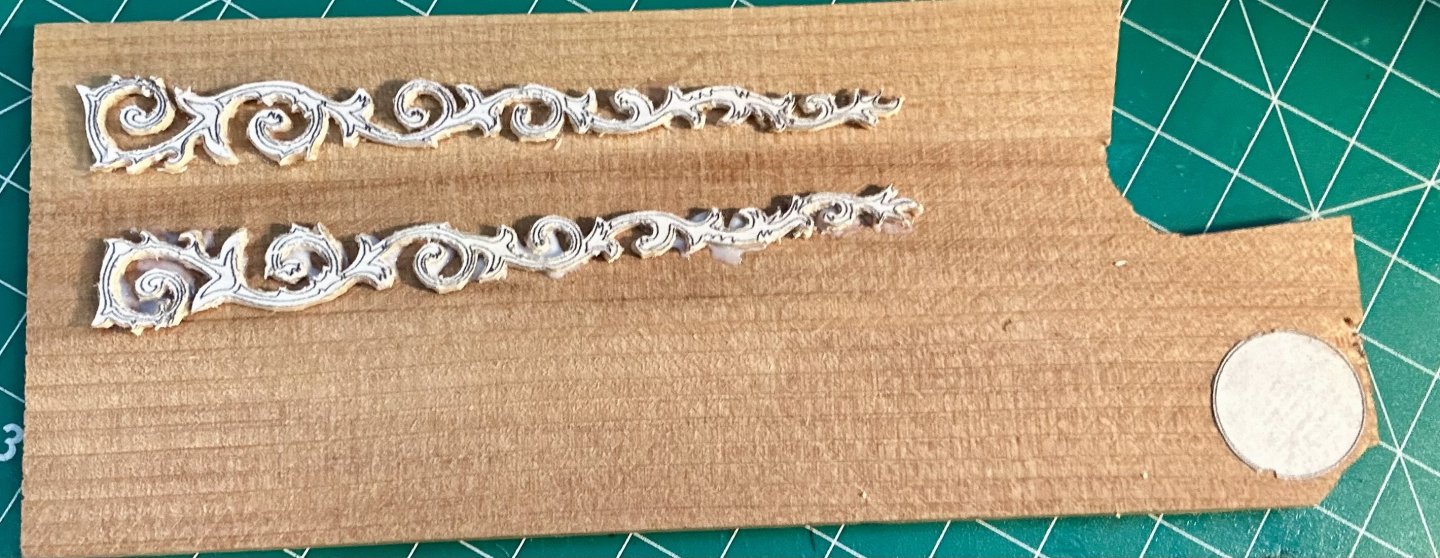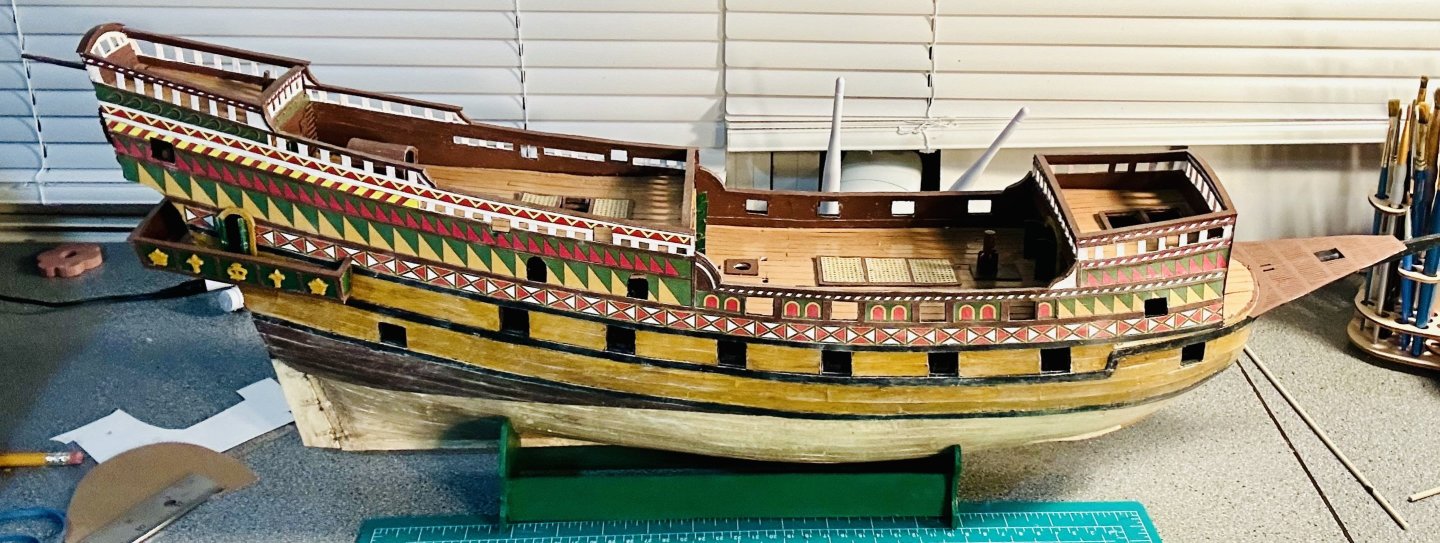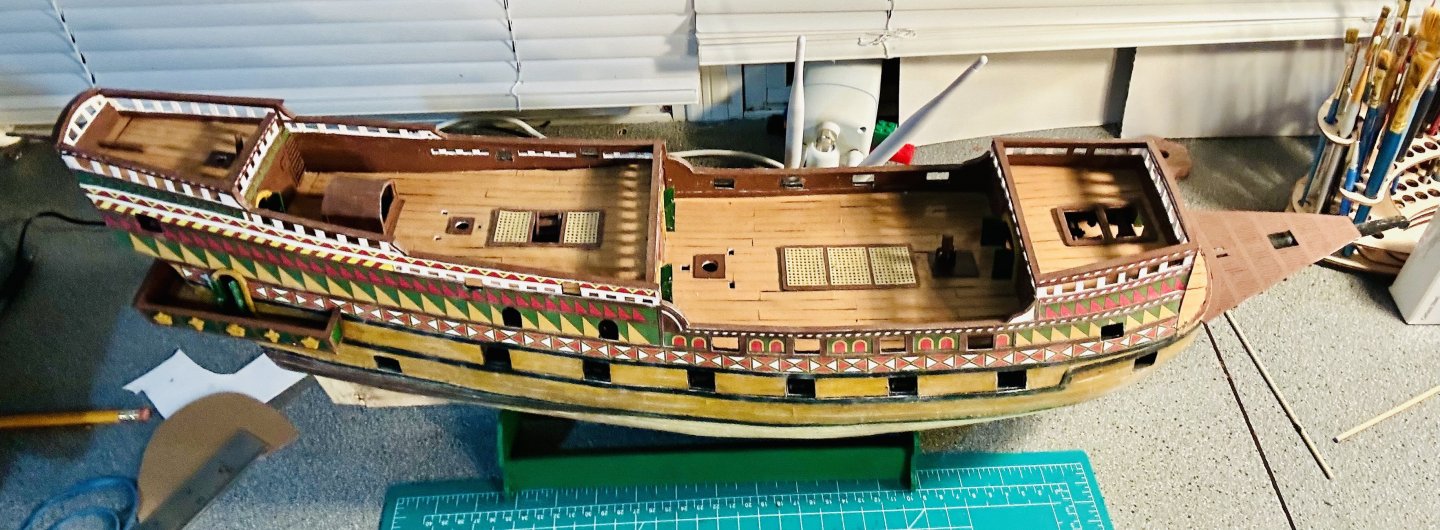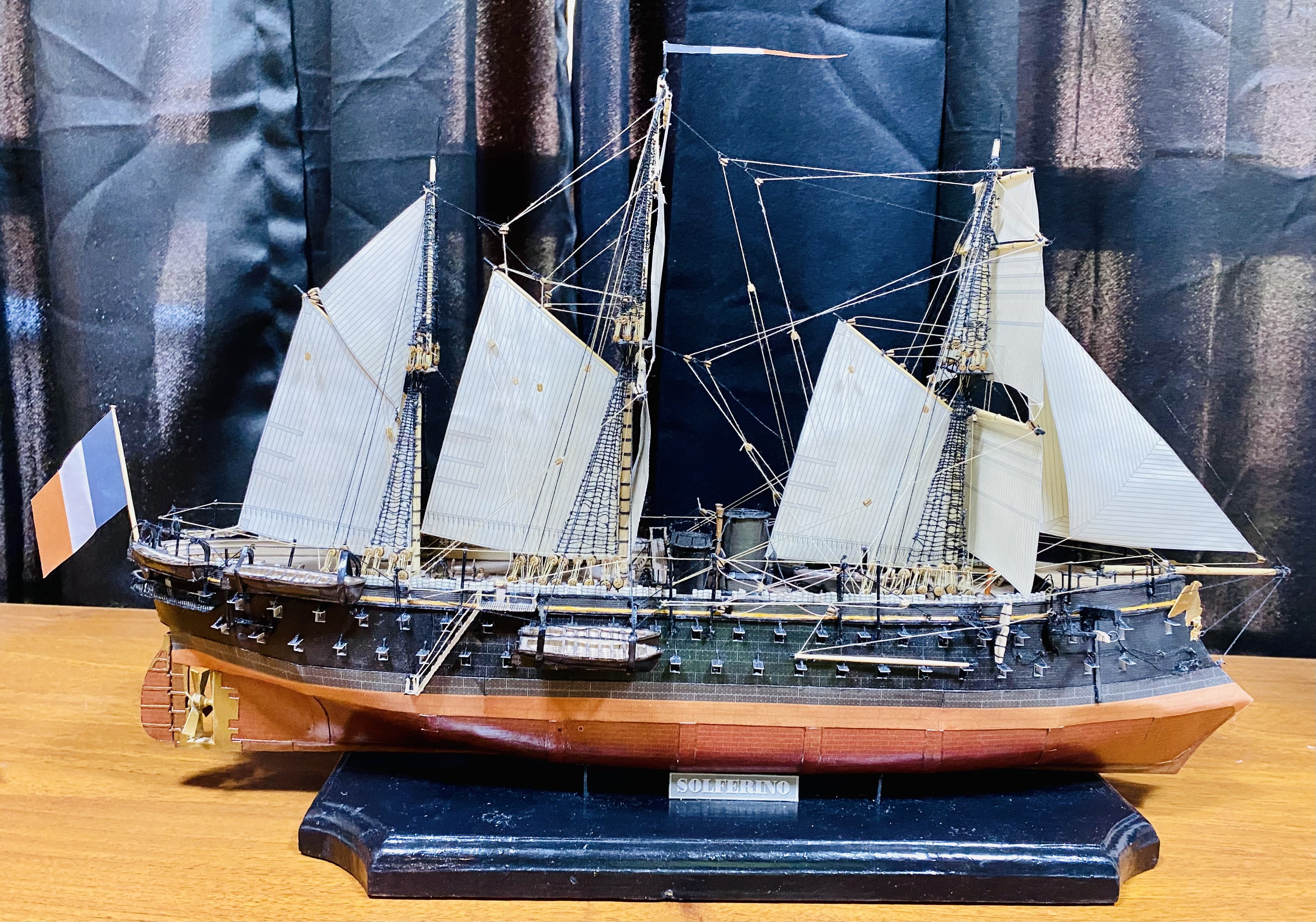
GrandpaPhil
NRG Member-
Posts
6,112 -
Joined
-
Last visited
Content Type
Profiles
Forums
Gallery
Events
Everything posted by GrandpaPhil
-
The Avangard is looking good! How does the Aleene’s Tacky Glue work on card models? I have never tried it.
-
She’s got guns: Here are the lids under way: The undersides of them are red, and I’m still working on the iron work. The outside portions need painted to match their surroundings and they still need eyebolts, which I made another 100 of yesterday. The gunport lids for this thing are not uniform due to 16th Century engineering, and dedicated gun-decks just becoming a thing. Therefore, you must keep track of each individual piece. I laid mine out like the instruction book, which came with the plans, had them.
-
The head is done: It ain’t perfect, but it’ll work! This model was originally intended as a test run just to see what I could do. One of the benefits of building from card is a low entry cost, and therefore low risk if something doesn’t pan out exactly how you want it to. I have learned a lot and developed many skills and techniques to use for the next build.
-
@catopower, Thank you very much! Thank you to everyone for the likes and for stopping by! The head is installed! And the seats of ease are made and drying: I’m going to put them up against the head bulwarks, where they are located on the Batavia, after they get painted. Next up, I am making the gunport lids and installing the below decks cannons.
-
@ccoyle, @Glen McGuire, @Baker, @72Nova and @Canute, Thank you all very much! Ken, Lol, I did catch the card modeling gene! It is @Ab Hoving and Chris’s fault! Ab Hoving’s card modeling from scratch tutorial on this forum was very informative and useful, and showed me that it was doable. That got me started with the Prince de Neufchatel. Then Chris sent me a link for HMV kits on Amazon which led to me finding all of the Orel kits, of which I have built two of them. They set me down a path that has led to 7 completed models so far.
-
Welcome!
-
Here are the scrollwork carvings prior to painting: Along with the head side panels. Here are the head side panels nearing completion: And lastly, the figurehead is permanently mounted: Nothing on this model is perfect, but it is good enough. This is my first time building a fully decorated warship from scratch. I’m happy with how it is turning out. This will be wonderful preparation for my de Zeven Provincien.
-
Revell 1:96 Cutty Sark after-market decals?
GrandpaPhil replied to Terry Lawson's topic in Plastic model kits
The upgrade wooden planked deck that came with my Encore Olympia was self adhesive. It’s still secure thirteen years later. -
Rick, The U-47 looks amazing! Be careful with card models! They are like potato chips, you can’t just have one! Here’s the link to Fenten’s Paper Models out of Germany: https://www.papermodel.com They are shipping to the USA again and have a very extensive selection!
-
The Revenge is out of Ordinary and back on my workbench: Going through the plans I realized how close I was to finishing this one when I put it away. Time to complete a couple of carvings and finish making a bunch of the parts which would be laser-cut in the Victory Models kit, that I had already prepared for cutting.
About us
Modelshipworld - Advancing Ship Modeling through Research
SSL Secured
Your security is important for us so this Website is SSL-Secured
NRG Mailing Address
Nautical Research Guild
237 South Lincoln Street
Westmont IL, 60559-1917
Model Ship World ® and the MSW logo are Registered Trademarks, and belong to the Nautical Research Guild (United States Patent and Trademark Office: No. 6,929,264 & No. 6,929,274, registered Dec. 20, 2022)
Helpful Links
About the NRG
If you enjoy building ship models that are historically accurate as well as beautiful, then The Nautical Research Guild (NRG) is just right for you.
The Guild is a non-profit educational organization whose mission is to “Advance Ship Modeling Through Research”. We provide support to our members in their efforts to raise the quality of their model ships.
The Nautical Research Guild has published our world-renowned quarterly magazine, The Nautical Research Journal, since 1955. The pages of the Journal are full of articles by accomplished ship modelers who show you how they create those exquisite details on their models, and by maritime historians who show you the correct details to build. The Journal is available in both print and digital editions. Go to the NRG web site (www.thenrg.org) to download a complimentary digital copy of the Journal. The NRG also publishes plan sets, books and compilations of back issues of the Journal and the former Ships in Scale and Model Ship Builder magazines.


